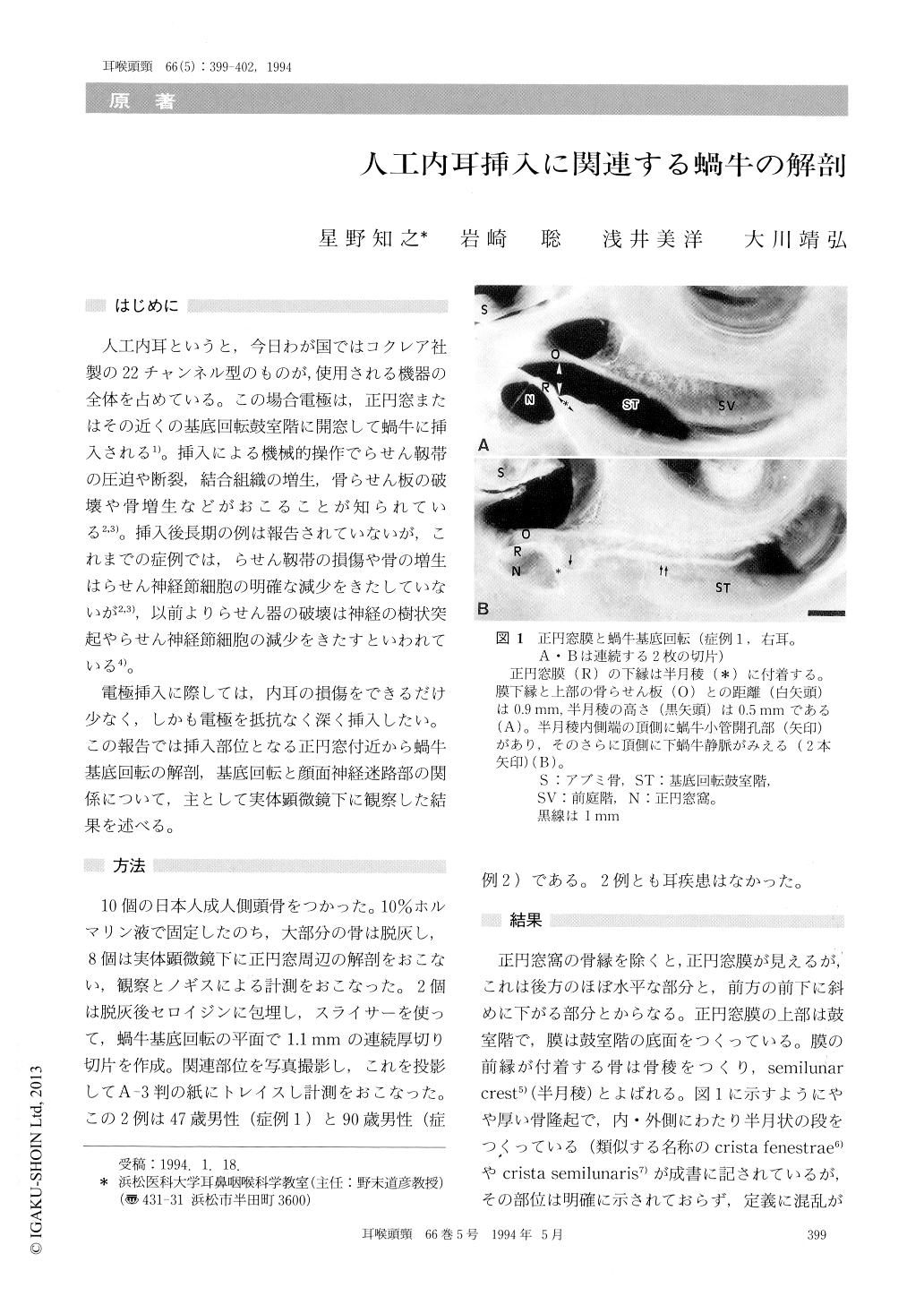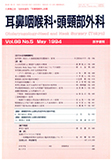Japanese
English
- 有料閲覧
- Abstract 文献概要
- 1ページ目 Look Inside
はじめに
人工内耳というと,今日わが国ではコクレア社製の22チャンネル型のものが,使用される機器の全体を占めている。この場合電極は,正円窓またはその近くの基底回転鼓室階に開窓して蝸牛に挿入される1)。挿入による機械的操作でらせん靱帯の圧迫や断裂,結合組織の増生,骨らせん板の破壊や骨増生などがおこることが知られている2,3)。挿入後長期の例は報告されていないが,これまでの症例では,らせん靱帯の損傷や骨の増生はらせん神経節細胞の明確な減少をきたしていないが2,3),以前よりらせん器の破壊は神経の樹状突起やらせん神経節細胞の減少をきたすといわれている4)。
電極挿入に際しては,内耳の損傷をできるだけ少なく,しかも電極を抵抗なく深く挿入したい。この報告では挿入部位となる正円窓付近から蝸牛基底回転の解剖,基底回転と顔面神経迷路部の関係について,主として実体顕微鏡下に観察した結果を述べる。
Eight adult temporal bones were dissected under a stereoscopic microscope to find the safest drilling point for insertion of a multichannel cochlearimplant electrode. Two other temporal bones were decalcified and sliced into 1.1 mm-thick sections, upon which measurements were made of the various structures relevant to electrode insertion. The safest and least destructive entry point into the scala tympani of the basal turn seemed to be the antero-inferior portion adjacent to the exposed round window membrane. Jacobson's nerve serves as a guide for drilling when the round window niche cannot be found.

Copyright © 1994, Igaku-Shoin Ltd. All rights reserved.


